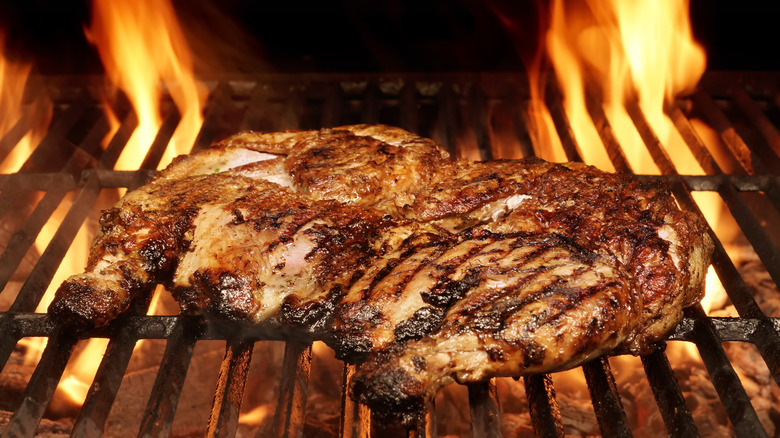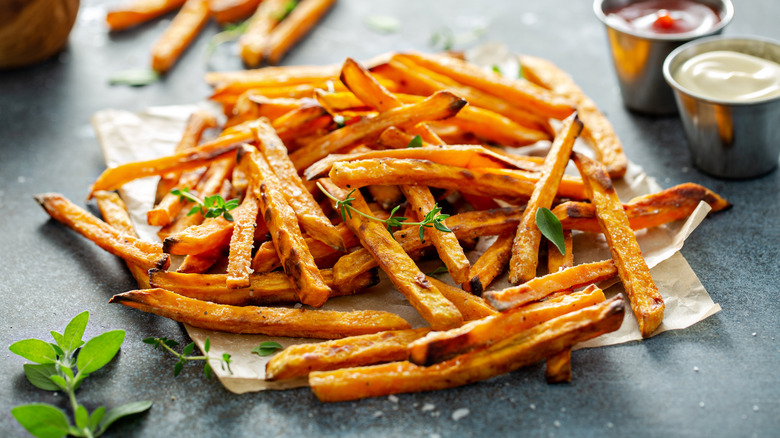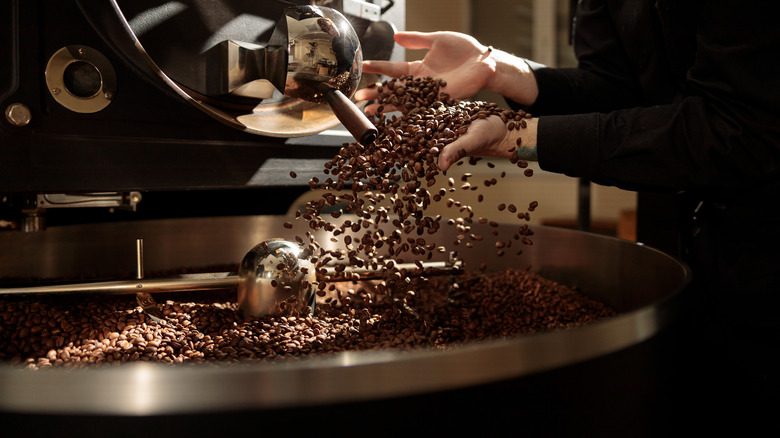How Does The Maillard Reaction Actually Work?
If you're not a chemistry nor science fan but love cooking, you might be disappointed to know that virtually all cooking processes involve some level of chemistry, from knowing when to salt your food to how to harness the power of both baking powder and baking soda when baking goods (or when cleaning your home, per Discovery). One of the truly awesome ways of watching chemistry play out in cooking ... is by observing the Maillard reaction.
You'll know what it is, even if you might not know its name. The Maillard reaction is what occurs between ingredients and your pots and pans while you're grilling, frying, or roasting something, be it your aromatics like onions and garlic, or proteins, whether it is seafood or meat. This chemical process even plays a part in getting your morning coffee brew to look and smell the way it does, according to the American Chemical Society.
The Maillard reaction involves protein, sugar, and heat
MasterClass describes the Maillard reaction as a chemical reaction that takes place when heat is applied to a sugar and an amino acid — the building block of all proteins (per MedlinePlus). When this happens, different flavors and aromas are coaxed out of the ingredients to create a taste or texture that might not have been there before. In explaining these outcomes, microbiologist and Serious Eats contributor Eric Schulze says the Maillard reaction communicates to us humans (via the senses) that the food and drink are now ready for consumption.
The Maillard reaction is named after a French scientist named Louis-Camille Maillard, who, in 1912, discovered that something specific happened when raw ingredients were cooked: They changed color, and emitted carbon dioxide as they were being heated, per NPR.
Perhaps confusingly, Modernist Cuisine points out that while browning can happen when ingredients are undergoing this change, you can only witness the Maillard reaction taking place when new tastes and smells are emitted — the result of an ingredient being roasted, grilled, or fried. As the cooking encyclopedia notes, a change in color for food isn't as important as the change in flavor when trying to determine whether the Maillard reaction has taken place or not.
Different ingredients manifest the Maillard reaction in different ways
High temperature is key to triggering the Maillard reaction, because it's temperatures above 212 F, or the boiling point of water, which can cause moisture that sits on the surface of most ingredients to evaporate, and for the heat to work its magic on the amino acids and sugar that sits on the surface. The Washington Post posits that the Maillard reaction starts to happen when surfaces reach 300 F.
It's important to note the Maillard reaction doesn't manifest itself in the same manner across different ingredients. A steak being grilled undergoes the Maillard reaction, just as bread baking in an oven does. As for roasting coffee beans, the Maillard reaction kicks in at about 302 F to about 400 F, which is when raw beans develop the flavor compounds that create the tastes and smells you associate with coffee, according to the American Chemical Society. It's also important to point out the Maillard reaction can only happen before temperatures reach 355 F, because after that, burning occurs.


